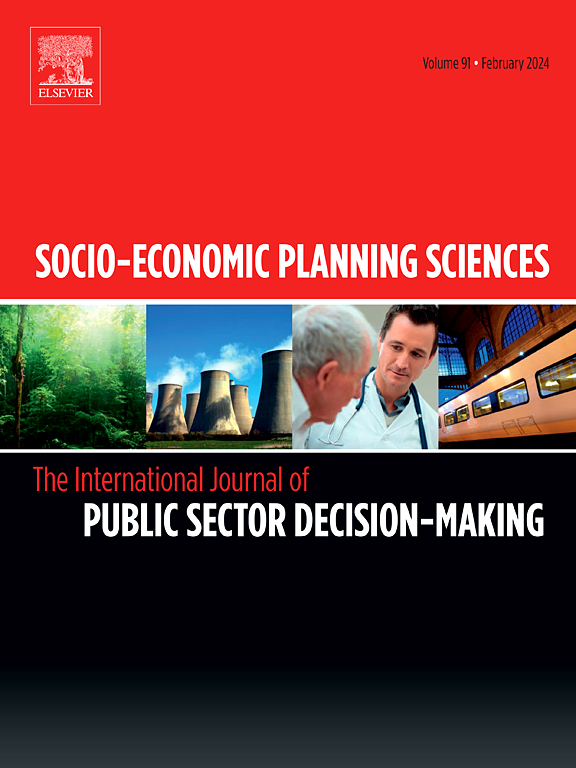论政府技术创新政策组合的最优效应:以政府采购与研发补贴为例——来自中国的证据
IF 5.4
2区 经济学
Q1 ECONOMICS
引用次数: 0
摘要
本研究通过考察中国政府采购与研发补贴的互动关系,探讨政府技术创新政策的最优组合。认识到政策平衡在提高企业创新成果方面的关键作用,我们研究了协调这两种政策工具的有效性和效率。本文运用两方演化博弈模型,分析了地方政府与上市公司之间的战略互动关系。我们的数值模拟和敏感性分析表明,过度依赖研发补贴是次优的。具体来说,我们发现plc——无论是主动还是被动地参与创新——对政府采购增加的反应比对研发补贴的反应更显著。当政府采购的价值超过研发补贴的价值时,两种政策的结合更有效和高效地刺激plc创新。值得注意的是,政府采购可以在早期阶段迅速启动plc的创新行为,这反映了其在短期内促进创新活动的重要作用。这些发现表明,政策制定者应该通过强调需求侧政策(如政府采购)和减少对研发补贴的依赖来重新调整创新政策组合。这种再平衡对于中国这样历来依赖补贴的经济体来说,对于促进可持续的创新增长尤为重要。本文章由计算机程序翻译,如有差异,请以英文原文为准。
Towards an optimal effect of government technology innovation policy mix: the case of government procurement and research and development subsidies with evidence from China
This study explores the optimal combination of government technological innovation policies by examining the interaction between government procurement and R&D subsidies in China. Recognizing the critical role of policy balance in enhancing innovation outcomes among companies, we investigate the effectiveness and efficiency of aligning these two policy instruments. Utilizing a two-party evolutionary game model, we analyze the strategic interactions between local governments and publicly listed companies (PLCs). Our numerical simulations and sensitivity analyses indicate that overreliance on R&D subsidies is suboptimal. Specifically, we find that PLCs—whether actively or passively engaged in innovation—respond more significantly to increases in government procurement than to R&D subsidies. When the value of government procurement surpasses that of R&D subsidies, a combination of both policies more effectively and efficiently stimulates PLCs innovation. Notably, government procurement can rapidly initiate PLCs’ innovation behavior in the early stages, reflecting its significant role in boosting innovation activity in the short term. These findings suggest that policymakers should recalibrate the innovation policy mix by emphasizing demand-side policies like government procurement and reducing reliance on R&D subsidies. This rebalancing is particularly crucial for economies like China, where there is a historical dependence on subsidies, to foster sustainable innovation growth.
求助全文
通过发布文献求助,成功后即可免费获取论文全文。
去求助
来源期刊

Socio-economic Planning Sciences
OPERATIONS RESEARCH & MANAGEMENT SCIENCE-
CiteScore
9.40
自引率
13.10%
发文量
294
审稿时长
58 days
期刊介绍:
Studies directed toward the more effective utilization of existing resources, e.g. mathematical programming models of health care delivery systems with relevance to more effective program design; systems analysis of fire outbreaks and its relevance to the location of fire stations; statistical analysis of the efficiency of a developing country economy or industry.
Studies relating to the interaction of various segments of society and technology, e.g. the effects of government health policies on the utilization and design of hospital facilities; the relationship between housing density and the demands on public transportation or other service facilities: patterns and implications of urban development and air or water pollution.
Studies devoted to the anticipations of and response to future needs for social, health and other human services, e.g. the relationship between industrial growth and the development of educational resources in affected areas; investigation of future demands for material and child health resources in a developing country; design of effective recycling in an urban setting.
 求助内容:
求助内容: 应助结果提醒方式:
应助结果提醒方式:


